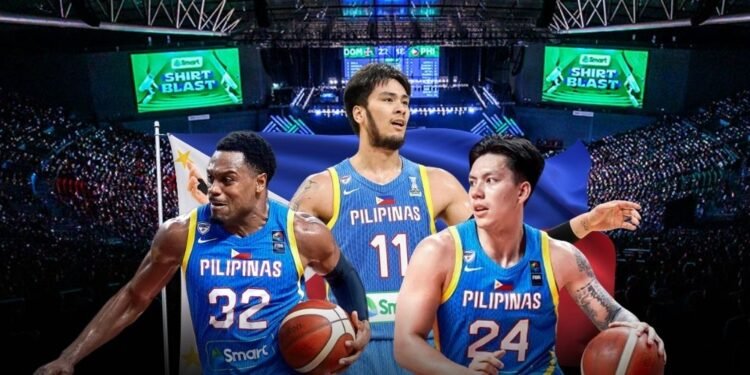The Philippines just bagged four medals at the 2025 World Games in Chengdu—two silvers and two bronzes, proof that Filipino athletes can slug it out in jiu-jitsu, billiards, wushu, and sambo.
It was a solid campaign, but if you asked the average Filipino, what really matters? They’ll say “basketball” before you even finish the question.
Other sports can shine abroad, but basketball has never left home. It’s been played in cracked barangay courts, Olympic stages, and mega arenas filled with record-breaking crowds. The sport is stitched into the country’s story, and no medal tally from any event will change that.
Imported but Owned
Basketball landed here in the early 1900s through the Americans and spread through schools and YMCA programs. By 1913, the Philippines already had a men’s team winning the Far Eastern Championship Games.
The first big global splash came in the 1936 Berlin Olympics, where the Philippines finished fifth overall—a record no other Asian country has beaten. That result showed the world that a country of smaller, faster players could hang with giants. Filipinos never forgot.
Bronze and Glory
The 1950s became the sport’s golden decade. The Philippines won gold at the 1951 Asian Games and ruled Asia for years.
Then came the crown jewel: the 1954 FIBA World Championship bronze medal in Rio. Led by Caloy Loyzaga, the team beat the world’s best to earn the only World Cup podium finish ever achieved by an Asian country.
That single medal did more than boost national pride. It planted the idea that basketball could be the sport where Filipinos, pound-for-pound, could stand out globally.
The PBA Effect
In 1975, the country made basketball a professional religion with the launch of the Philippine Basketball Association (PBA)—the first pro league in Asia and the second oldest in the world after the NBA.
Suddenly, basketball wasn’t just about national teams. It became an everyday spectacle, with branded franchises, superstar imports, and homegrown legends.
The PBA gave Filipinos a reason to tune in year-round. The league turned games into events, created dynasties, and ensured every household had a basketball team to argue about over dinner.
Every Barangay Has a Court
Basketball isn’t a Manila-only obsession. From dusty lots to covered courts, barangays everywhere treat hoops like a civic duty.
The government even formalized it. In 2003, the DILG rolled out a program for grassroots basketball at the community level. On top of that, the Sangguniang Kabataan (SK) regularly allocates youth budgets to sports programs, usually funneling straight into inter-barangay basketball leagues.
The DILG–BAP grassroots initiative (MC 2003-140) instructed local governments to promote basketball and fitness at the barangay level. Meanwhile, the Sangguniang Kabataan budget rules channel youth funds into sports programs, which almost always mean barangay basketball tournaments. These policies show basketball has become part of governance, not just recreation.
Gilas Keeps the Faith
The national team program—Gilas Pilipinas—carries the torch internationally. Formed under the Samahang Basketbol ng Pilipinas (SBP) in 2006, Gilas has endured coaching shake-ups, political drama, and plenty of heartbreaks.
There were highs: silver at the 2013 FIBA Asia Championship, a historic win against Senegal in the 2014 World Cup, and the Asian Games gold medal in 2023, the first since 1962. There were lows: the infamous 2018 brawl with Australia, heavy losses at global tournaments, and the brutal grind of Olympic qualifiers.
Yet the fire never died.
In 2024, Gilas stunned Latvia at the Olympic Qualifying Tournament—their first win against a European team in six decades. By August 2025, they ranked 34th in the world after a quarterfinal run in the FIBA Asia Cup.
Gilas proves that Filipinos will always chase respect on the international stage, win or lose.
The Unofficial National Sport
Technically, arnis is the national sport of the Philippines.
But in reality, basketball rules the throne. During the 2023 FIBA World Cup, 38,115 fans packed the Philippine Arena—the largest crowd in FIBA history. The NBA itself confirmed that the Philippines consumes more of its content than any other country outside the US. Surveys by YouGov and Nielsen only back up the obvious: basketball is the most-followed sport here by far
The sport isn’t official by law, but it doesn’t need paperwork to prove what Filipinos already live every day.
Why Quitting Isn’t an Option
The Philippines can—and should—invest in other sports, as Chengdu showed.
Combat sports and cue sports are medal-rich, and athletes in these fields need recognition. But basketball is different. It isn’t measured in medals; it’s measured in daily life. It’s in the barangay court games at dusk, the PBA matches on TV, the Gilas heartbreaks we can’t quit watching, and the Olympic dreams that keep resurfacing.
Basketball has been here for more than a century, and it shows no signs of fading.
Filipinos won’t quit basketball because it isn’t just a sport anymore—it’s the country’s language, religion, and everyday drama rolled into one.











